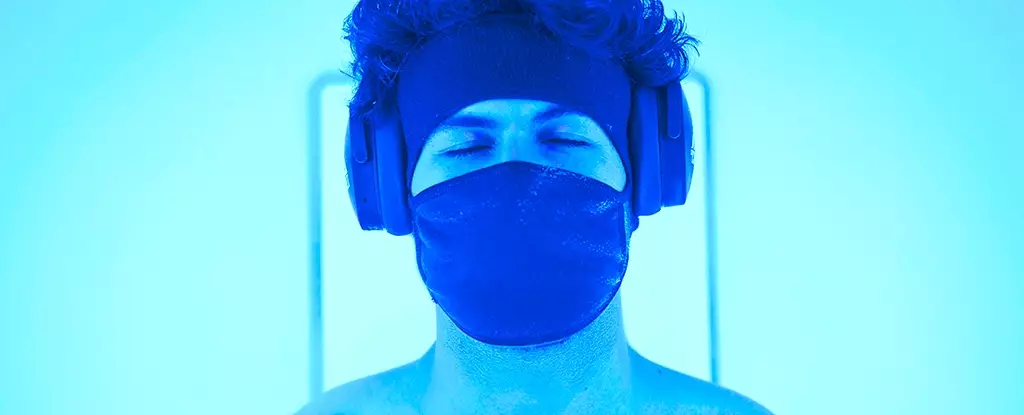In our pursuit of better sleep, people are often quick to try various methods from meditation to modern tech gadgets. However, emerging research suggests that a five-minute daily session in a cryostimulation chamber, which cools the body to as low as -90°C (-130°F), could be a powerful ally in achieving restorative sleep. A groundbreaking study led by researchers at the University of Poitiers in France has revealed that this unconventional approach may significantly improve sleep quality and mood. Although the outcomes are promising, they also raise questions about the practical applications and mechanisms behind these remarkable effects.
The study involved twenty healthy young adults, averaging 23 years in age, who participated in a regimen of daily five-minute cryostimulation sessions over a period of five days. During this period, researchers meticulously recorded their sleep patterns and biological responses using sophisticated monitoring equipment, including brain and heart sensors. Participants were instructed to maintain their regular daily habits, aside from avoiding alcohol, caffeine, and intense physical activity.
Through their analysis, the researchers discovered a notable increase in slow-wave sleep—often referred to as the restorative stage of sleep—averaging an increase of 7.3 minutes during the initial two sleep cycles following cryostimulation. This finding aligns with existing knowledge that slow-wave sleep plays a crucial role in memory retention and overall mental health. Furthermore, the study highlighted improvements in mood and reduced anxiety levels, with the benefits appearing particularly pronounced among female participants.
One of the intriguing aspects of the study is the observation that male and female participants responded differently to the cryostimulation intervention. Kinesiologist Olivier Dupuy, from the University of Montreal, emphasized that this discrepancy indicates the need for gender-specific adjustments in treatment approaches. While the study didn’t explore this in detail, the notion that cold exposure might have varied effects based on biological sex is a fascinating area worthy of further investigation.
The link between improved sleep quality and emotional well-being cannot be overstated. Sleep disorders and mood disorders often intersect, creating a cycle that can be challenging to break. If cryostimulation can provide relief on both fronts, it could potentially offer a dual benefit to those struggling with sleep-related issues.
Despite the promising results, the study is not without limitations. The sample size of twenty participants is relatively small, and the research did not delve deeply into understanding the biological mechanisms that connect cryostimulation to enhanced sleep quality. Additionally, elements like the duration of cryotherapy sessions could also be varied to assess broader effects.
Notably, certain dimensions of sleep, such as the speed of onset and the amount of time spent in REM sleep—crucial for consolidating memories and processing emotions—showed no significant change due to the cold exposure. This could indicate that while cryostimulation may positively influence restorative sleep stages, it doesn’t necessarily enhance every facet of the sleep cycle. Future studies could include larger participant groups and diverse demographics to yield more generalized conclusions.
The potential benefits of cryostimulation extend beyond solitary sleep enhancement. Previous research has established that whole-body cryotherapy can facilitate post-exercise recovery, alleviate inflammation, and improve overall well-being. The current findings suggest that these benefits may extend into the realm of sleep quality, which warrants a broader dialogue regarding the therapeutic applications of cold therapy.
Interestingly, the practice of using cold for therapeutic purposes dates back to ancient Greece, providing a historical context for contemporary investigations. While the scientific community is still unraveling the complexities of its efficacy, the foundational principles indicate a promising intersection between tradition and innovation.
As the quest for optimal sleep continues, cryostimulation presents an intriguing avenue for exploration. Not only does recent research offer a glimpse into its potential benefits on sleep quality and mood, but it also opens discussions surrounding gender-specific treatments and the deeper biological mechanisms at play. While the limitations of the study prompt caution and call for further research, the early findings establish a compelling case for considering cold exposure as an innovative strategy for enhancing sleep health and emotional well-being. The chilling connection between cryotherapy and sleep is just beginning to be understood, and as more evidence accumulates, it could lead to significant advancements in sleep therapies and interventions.

